Whatever your interest in antique glass collection might be, knowing the types of collectible glass is one of the best ways to start your journey.
The versatility of glass as a construction material led to its use in creating various functional pieces. From domestic pieces like cups, bowls, and vases to science equipment and even weapons, humans have used glass to craft a lot over the centuries.
Naturally, the versatility and extensive applications of glass allow the existence of many types of collectible glass. However, the world classifies and labels each antique glass type you will find in many ways. So, running through the types of collectible glass might be a bit complicated.
Fortunately, you are on our own page, and we’ve made things much easier for you. Below, we discuss 15 types of collectible glass based on various factors.
Types of Collectible Glass Based on Method
Blown Glass
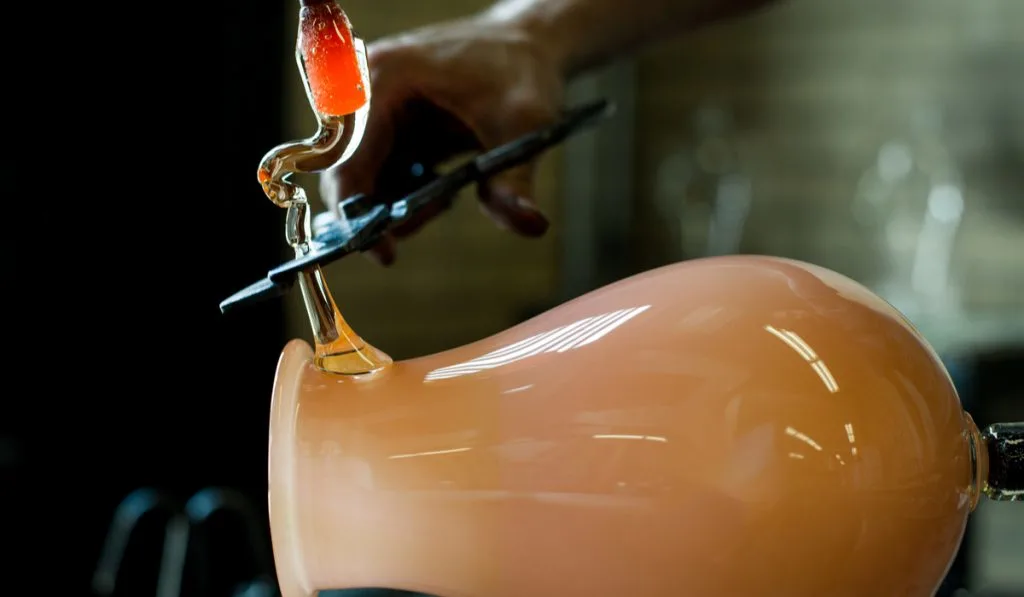
Blown glass is an antique type of glass still in use today. The production method of this type of collectible glass involves blowing a bubble into molten glass using a blowpipe. Unlike pressed glass, blown glass does not have seams. However, it has a rod mark or pontil from the blowpipe.
Unsurprisingly, blown glass looks blown. It often has shifts or tiny bubbles and colors that blend. Blown glass might come as a single unit. Alternatively, it might be an assembly of multiple blown pieces.
Cut Glass
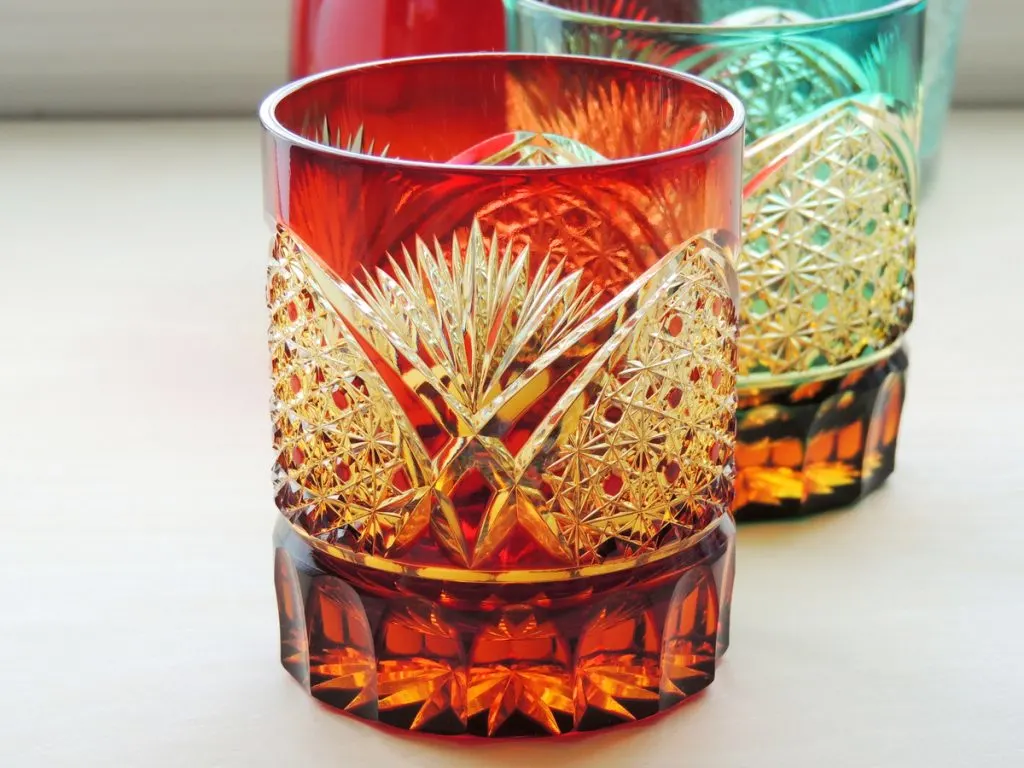
Cut glass is the oldest type of collectible glass. Its inception dates as far back as 2000 years ago. Cut glass features exterior cut designs created with a machine or by hand. The creation process involves holding a cold glass piece and carving designs onto its surface by hand or with a machine.
Like blown glass, cut glass has no seam, or the seam stays hidden. And while pressed glass is sometimes made to look like cut glass, the outer cut of cut glass is sharper than pressed glass.
Cut glass is generally sophisticated and expensive.
One type of cut glass – cut lead glass – is particularly thought of as high-end. People use it to make stylish wares like wine glasses, fancy bowls, and crystal chandeliers.
Cut lead glass also goes by the names lead crystal and crystal. Due to its high level of fineness, it never shows seams.
The Vintage American cut glass (also called American Brilliant cut or Brilliant cut) is another subtype of cut glass. Its inception was between the late 19th century and early 20th century – a period during which pieces made from it were a sign of class and wealth.
The Portland Vase is one interesting piece of cut glass from the first century. The production involved carving the top layer, which was white, to reveal the dark blue glass beneath.
Pressed Glass
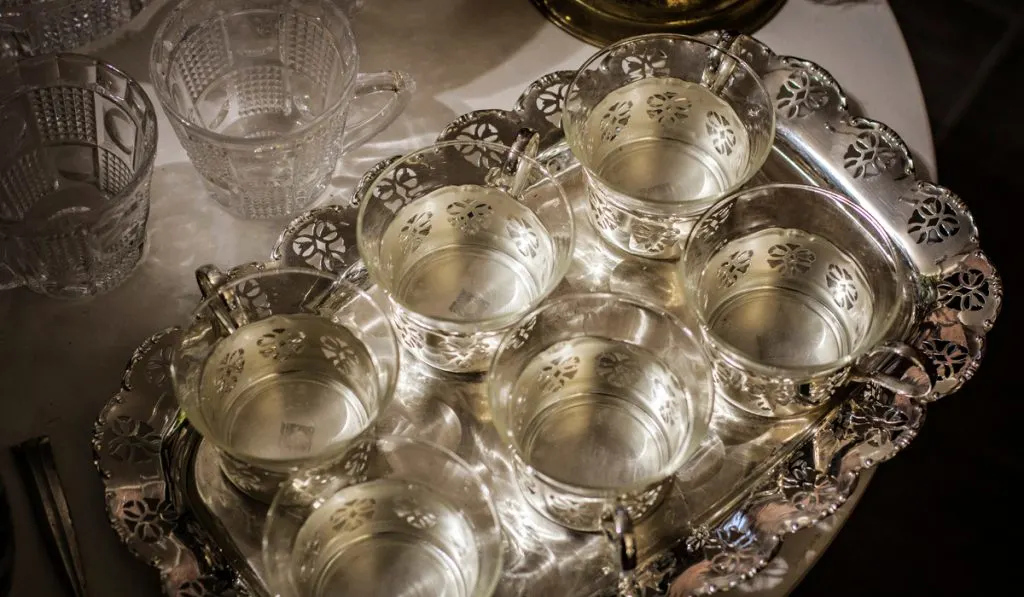
Most glass pieces are pressed glass. Pressed glass forms from pouring molten glass into a mold with the intended shape, design, and pattern. Pressed glass almost always has seams.
The seam of pressed glass appears as a thin line running along the edges of the glass piece. One upside to this type of collectible glass is the diverse possibilities. As long as you can create a corresponding mold, you can get any design you want.
One example of antique pressed glass is the Early American Pressed Glass (EAPG). This piece was popular between the mid-1800s and early-1900s.
Types of Collectible Glass Based on Genre
Art Glass
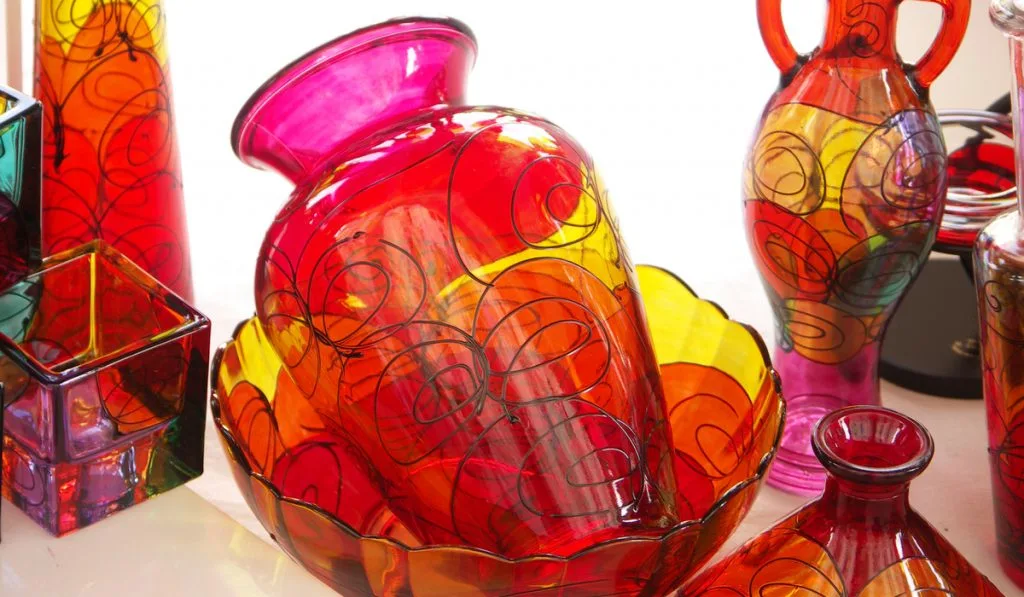
Art glass generally refers to innovative artwork made with glass.
At the start of the 20th century, many glassmakers started trying various new design techniques. Their trials birthed an assortment of artistic glassware, including paperweights, vases, figurines, bowls, sculptures, marbles, and bottles.
After the 1910s, art glass fell out of favor in the United States. But around the 1950s and 1960s, it experienced a revival.
Companies like Durand, Steuben, Tiffany Studios, and Quezal led the charge for art glass revival in the United States. Their art glass all had differing design techniques. However, most shared the quality of having vibrant colors, iridescence, and naturesque patterns.
While collectors go after various art glass, pieces from some makers are often more valuable than others. This is why people sometimes tell the value of art glass by looking for a signature or maker’s mark. But then, remakes are common.
So, you should learn the styles, colors, and marks of genuine art glass as this improves your chance of identifying the maker.
Besides looking for a maker’s mark, you can also tell the value of art glass by checking if it is handmade and verifying its uniqueness.
Carnival Glass

Carnival glass came to be in 1907 as an inexpensive substitute for Tiffany Favrile. Since it was relatively economical to produce, people did not want to pay high prices for carnival glass pieces. So, carnival glass was often given away at carnivals. Hence, the name.
Northwood and Fenton were the two brands that led the way in carnival glass production.
In fact, Fenton made the first carnival glass piece. Both brands gave their glassware descriptive names, including strawberry scroll, peacock, thistle, wreath of roses, and water lily.
The popularity of carnival glass in the United States did not last too long as it fell out of favor around 1925. Then, in the 1950s, collectors revived interest in it as they sought after carnival glass with decorative qualities. They wanted carnival glass with a vibrant, colorful appearance.
Carnival glass typically has more than one sheen color; it shows a different color when viewed from different angles. This ability to have multiple sheens at various angles results from spraying the hot glass with metallic salts before firing.
As with any collectible glass piece, some factors affect the value of carnival glass. They include age, size, item type, condition, and color.
On age, for instance, carnival glass from before 1940 is generally more valuable than those from after 1940. Also, carnival glass colored marigold and ice green are rare, so they cost more.
Depression Glass
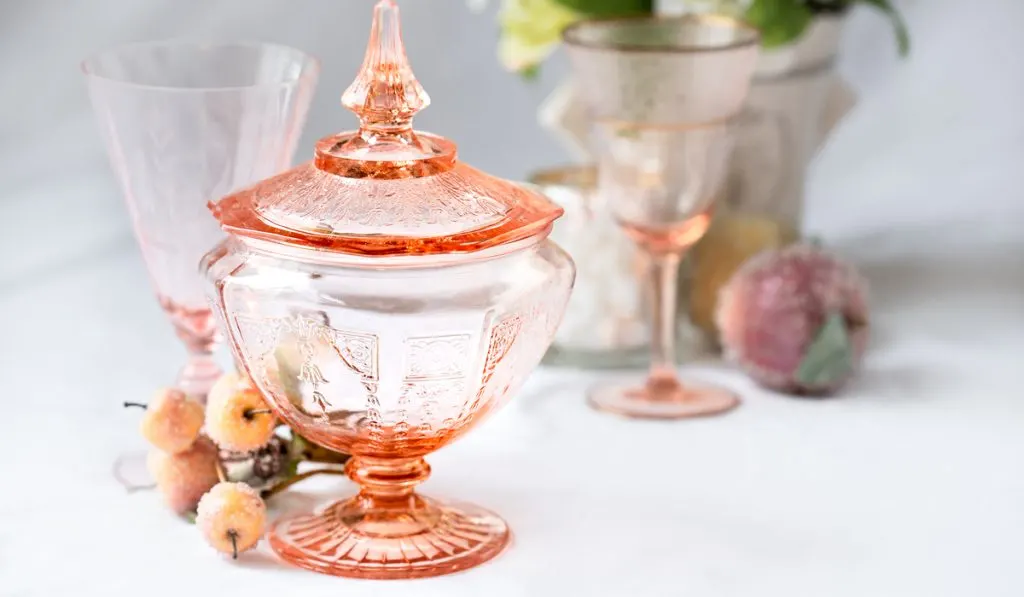
Glassmakers produced depression glass in large quantities during the Great Depression. The pieces were highly affordable. In fact, some companies gifted them with the purchase of another item.
Depression glass is available in various colors – some bright, others iridescent, and others opaque. Of all the colors, green and pink seem to be the most popular amongst collectors. Perhaps this popularity is a result of the rarity of those colors.
Depression glass came in geometric shapes and had opalescent trims and etched details. However, the production process had its flaws. So, it wasn’t uncommon to find heavy mold marks, air bubbles, and other faults in the glass.
For collectors, the typical flaws do not affect the value of depression glass. In fact, they are a mark of authenticity in some cases.
Overall, the value of depression glass depends on age, pattern, object type, and color. Generally, intricate patterns, rarer colors, and uncommon objects are more valuable.
Elegant Glass

The inception of pressed glass in the 1920s led to the production of economical glass. However, some manufacturers chose to keep producing high-end glassware even when they could switch. Their process employed the precise handwork of skilled crafters to create pieces of glassware known as elegant glass.
Elegant glass is similar to vintage depression glass because it comes in various colors and features intricate flower designs. However, the production processes of both collectible glass types are obviously different.
Like other vintage glassware, the value of elegant glass depends on age, color, object type, and pattern. You could pay less than 20 dollars for a candle holder. But a complete elegant glass set could cost you thousands of dollars.
Types of Collectible Glass Based on Era
When it comes to collectible glass, we must remember that collectible glass can be modern or vintage. In fact, we have a whole article on the types of vintage glassware. We’ll look at some of the basic types here.
Historic Glass
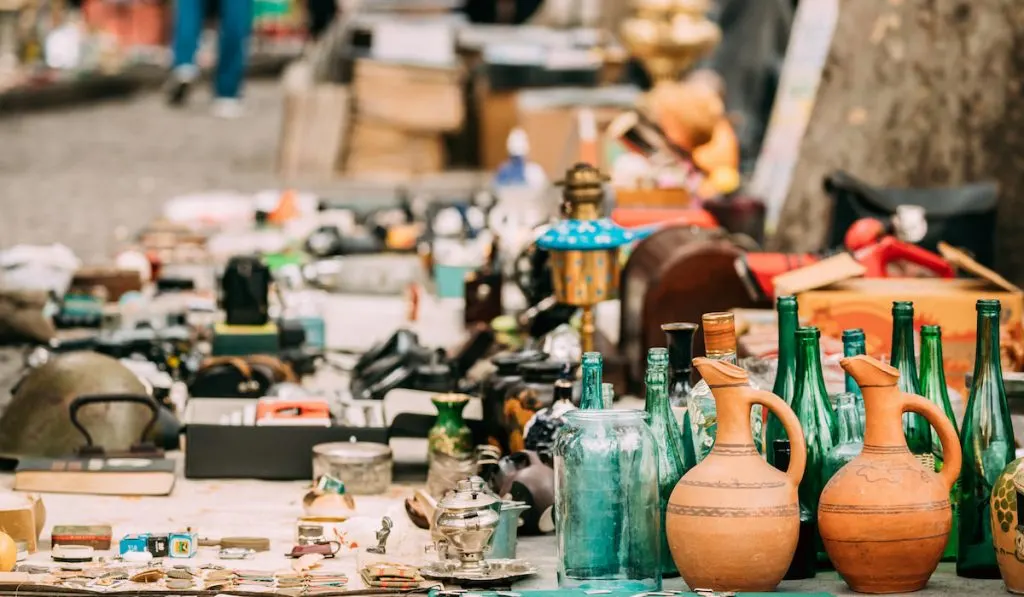
As early as the late 1700s, America had some glass manufacturers producing utilitarian jars and bottles. The New Hampshire Glass Factory, Marlboro Street Glass Works, and South Stoddard Glass Manufacturing Company were some of those manufacturers.
Today, collectors collect those pieces of glassware as historic glass. Historic glass included pitchers, glass flasks, and medicine bottles.
When identifying historic glass (utilitarian bottles and jars), pay attention to the age. The production date of historic glass falls between the late 1700s and the 1950s.
Besides production date/age, the function of a piece of glassware can help you ascertain if it is historic glass or not.
The production process/technique, production location, and location of usage can also help you in identifying a historic glass.
Mid-Century Glass
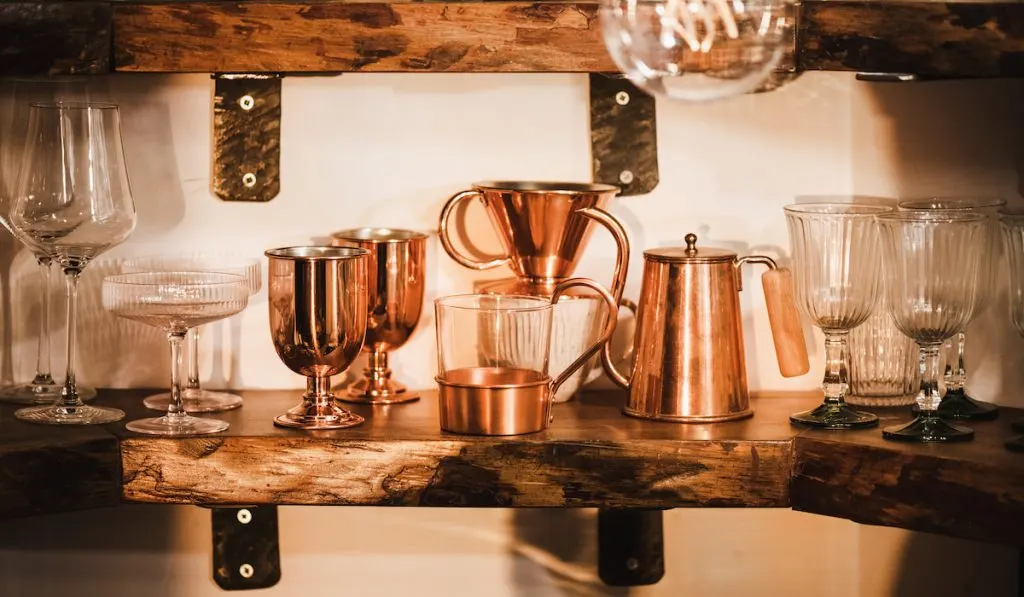
Mid-century glass is basically glass made during the mid-century. In most cases, such antique glass pieces are having a revival.
Mid-century glass is abundant, so it is not hard to come by. You will find it in thrift stores and estate sales. While mid-century glass is typically budget-friendly, you will find some Fenton pieces that go for hundreds of dollars.
Types of Collectible Glass Based on Formula
Borosilicate Glass
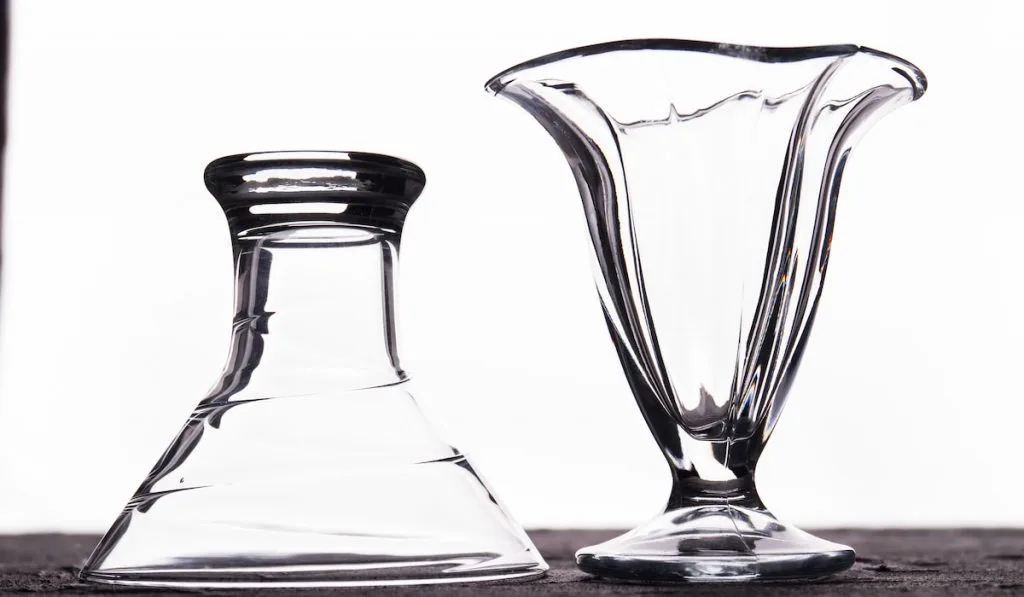
Borosilicate glass also goes by the name Pyrex. It is so named because the formula of this antique glass type makes heat-resistant glassware. Some of them include oven windows, cooking ware, and microwave windows.
Borosilicate (Pyrex) glass uses a formula similar to soda-lime glass. In fact, you may not readily tell the difference between them at a glance.
However, since borosilicate glass undergoes a tempering process through second cooking, the properties of both types of glassware differ.
For antique glass collectors, the best time for Pyrex glass was between the 1950s and the 1970s. Then, many cookware and dinnerware still came from borosilicate glass. Also, the Pyrex glassware during that period had some popular patterns.
Cobalt Glass

Cobalt glass is one of the oldest types of collectible glass. It has been around for multiple centuries, and it stands out because of its unique blue color.
The deep blue color of cobalt glass comes from the addition of cobalt salts in the formula.
Cranberry Glass

Like cobalt glass, cranberry glass stands out because of its color. Cranberry glass – which also goes by Rubino Oro and Gold Ruby – has a peculiar red color. The said color comes from mixing molten glass with gold oxide.
Cranberry glass items are pretty expensive. So, more times than not, people make sophisticated glassware with it.
Lead Glass
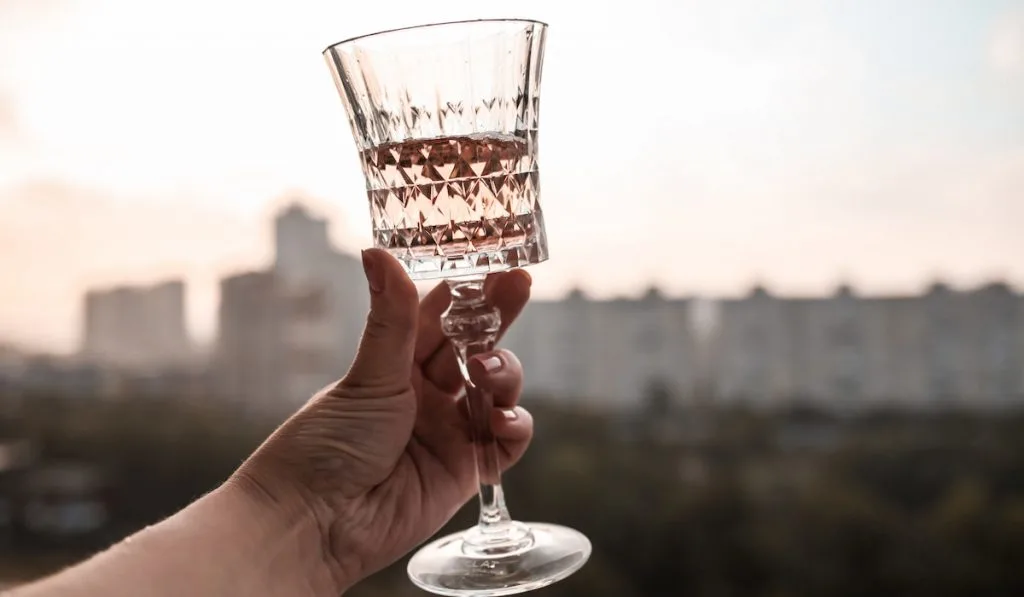
As the name implies, lead glass contains lead. However, the amount in the formula is only 10% or less.
The diamond-like, sparkly brilliance of lead glass is its standout feature. But beyond that, lead glass is pretty versatile.
Lead glass is typically for making fine glass such as chandeliers, wine glasses, and fancy dinnerware. But apart from that, it finds purpose in science laboratories.
Since lead glass can block various wavelengths of light, including UV and infrared, scientists find them useful.
You can get cut lead glass – a fine glass – from lead glass. Cut lead glass is also known as lead crystal, and it is material for making fake diamonds and rhinestones.
Soda-Lime Glass
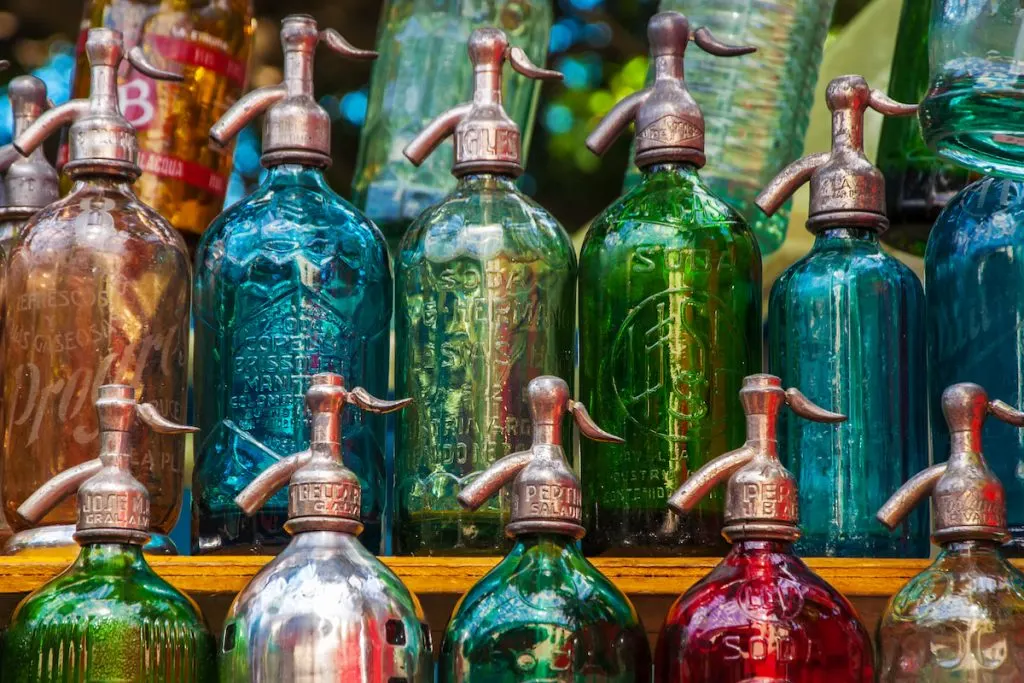
Soda-lime glass has a lime and sodium carbonate combination as its chemical formula. It is somewhat rigid and innately clear – although not as much as lead glass.
Like lead glass, you can shape soda-lime glass into different designs. You can blow, cut, or press it.
Uranium Glass
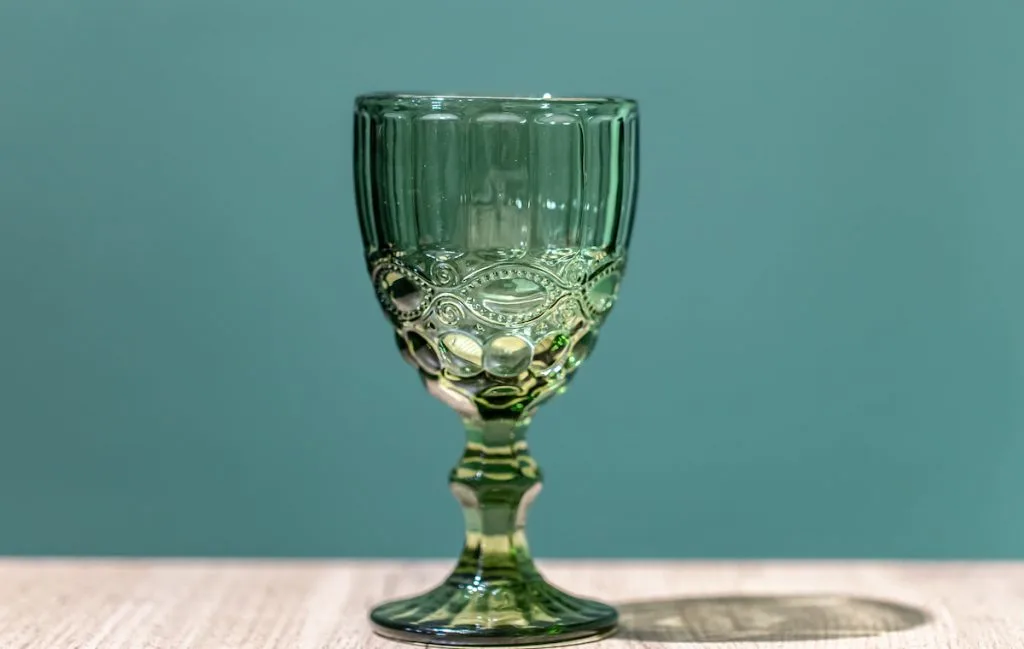
Uranium glass contains uranium salts in its formula. Thankfully, the addition of the said salts makes it a highly collectible glass.
Uranium salts are bright yellow. So, when added to glass, they make glass yellow. They may also make glass green with the addition of some extra coloring agents.
Uranium glass can be transparent or opaque. It comes in various forms, including figurines, plates, cups, candlestick holders, saucers, and pepper shakers.
Naturally, uranium is radioactive. However, the radiation from the uranium salts used in uranium glass is so minimal and harmless.
You can identify uranium glass by its appearance – yellow to green color. But then, you could even confirm its identity under black light as it gives off bright green fluorescence.
Uranium glass collectors go as far as trying to detect radiation with a Geiger counter in some situations. However, for most people, the black light test suffices.
Uranium glass comes in 3 main categories: custard, jadeite, and Vaseline. While these subcategories only apply to uranium glass, people sometimes misuse them for non-uranium pieces.
Custard Glass
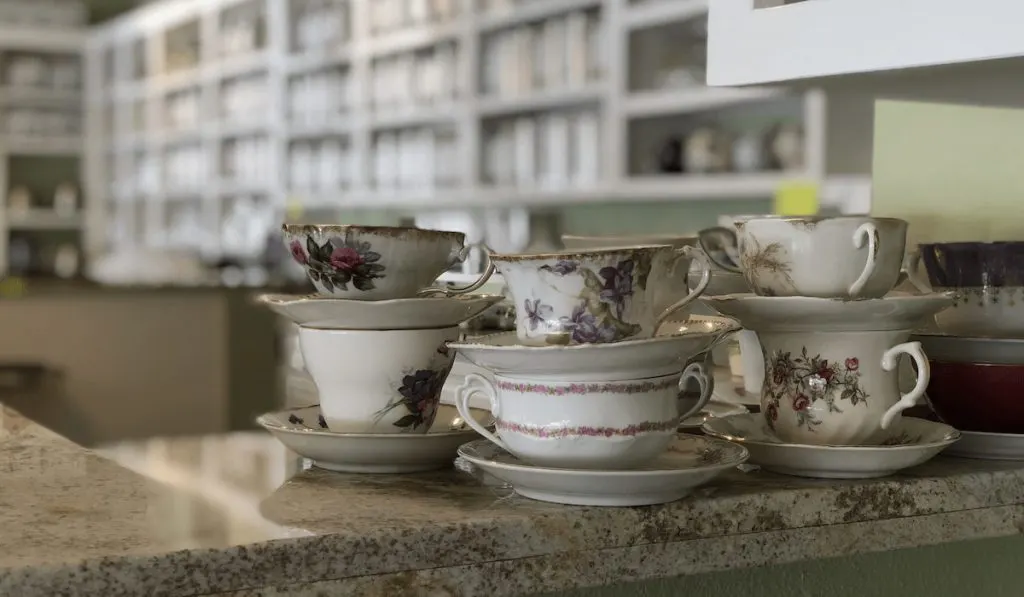
Custard glass takes on the color of custard. Hence, the name. It has an opaque yellow or partially opaque yellow color, and of course, it contains uranium. But then, people sometimes refer to non-uranium glass with opaque or partially opaque yellow color as custard glass.
Jadeite Glass
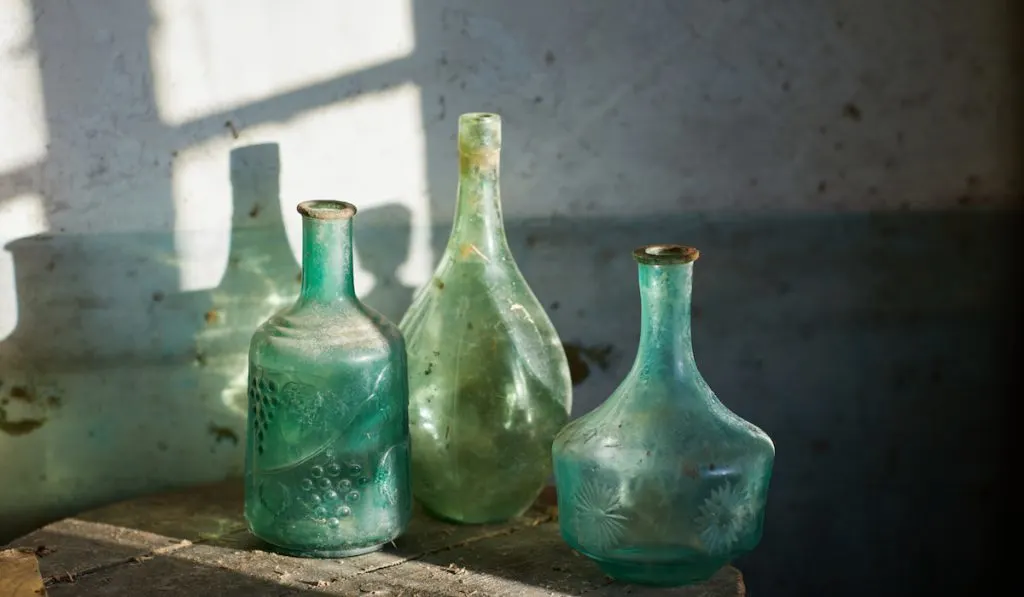
Jadeite glass has an opaque or partially opaque pale green color. Like the others, people sometimes call non-uranium glass with a similar color jadeite glass.
Vaseline Glass
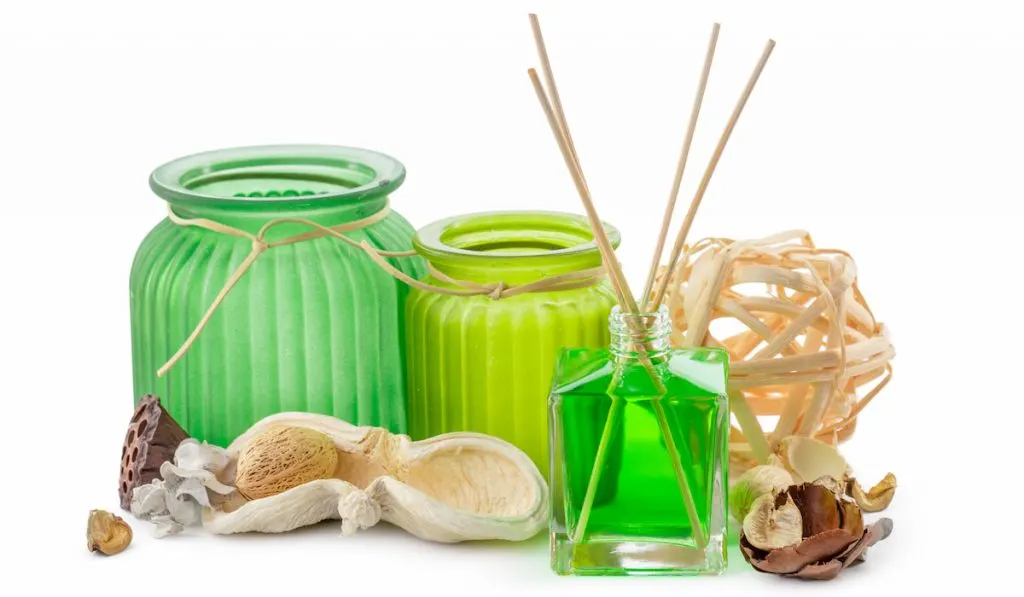
Vaseline glass is transparent uranium glass with a yellow or yellow-green tinge, which looks like Vaseline. Hence, its name.
You may come across some inconsistent definitions while trying to identify Vaseline glass. Some refer to all uranium glass types as Vaseline glass.
Some even call any transparent yellow non-uranium glass Vaseline glass. Then there are also insinuations that Vaseline glass can only be yellow. So, take note of these.
Resources
- https://glassking.com/listing-down-the-different-types-of-antique-glass/
- https://www.invaluable.com/blog/vintage-glassware/
- https://davidcycleback.com/2013/05/01/a-look-at-different-types-of-antique-glass/
- https://calauctions.com/types-of-collectible-glass-which-ones-are-the-most-valuable/
- https://www.eater.com/22567135/collecting-pyrex-vintage-patterns-sets
- https://sha.org/bottle/
